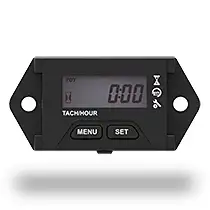Ontario Electrical Safety Code

CSA Z462 Arc Flash Training - Electrical Safety Essentials
Our customized live online or in‑person group training can be delivered to your staff at your location.

- Live Online
- 6 hours Instructor-led
- Group Training Available
Download Our OSHA 4475 Fact Sheet – Being Aware of Arc Flash Hazards

- Identify root causes of arc flash incidents and contributing conditions
- Apply prevention strategies including LOTO, PPE, and testing protocols
- Understand OSHA requirements for training and equipment maintenance
Ontario Electrical Safety Code sets ESA-enforced wiring standards, grounding, bonding, overcurrent protection, GFCI/AFCI, and installation compliance for residential, commercial, and industrial systems, aligning with CSA C22.1 and requiring permits, inspections, and documentation.
What Is the Ontario Electrical Safety Code (OESC)?
ESA-enforced provincial code for safe electrical work, aligned with CSA C22.1; governs wiring, grounding, inspections.
✅ Sets rules for wiring, grounding, bonding, overcurrent protection
✅ Requires ESA permits and inspections for installations
✅ Updated triennially to align with CSA C22.1
The Ontario Electrical Safety Code (OESC), or, Ontario Regulation 169/99, is the electrical safety regulation for the Province of Ontario. This code protects electrical workers and the general public by regulating electrical equipment installations and by placing a certain level of standards that help prevent electrical accidents caused from electric shock and fire hazards. For example, the OESC outlines specific electrical safety requirements for wiring and equipment in structures and buildings in Ontario. If wiring isn’t done correctly or electrical workers don’t take the proper precautions when the installation is taking place, then electrical accidents can occur. The Ontario Electrical Safety Code is referenced by the Canadian Electrical Code that contains specific amendments made by the Province of Ontario. Continual updates of the Ontario Electrical Safety Code are also done in conjunction with the Canadian Electrical Code. For a broader overview of risk reduction practices, see electrical safety principles applied across industries.
Visit our Ontario Electrical Safety Code Training Course
Every three years, there are amendments made to the Ontario Electrical Safety Code. Electrical safety requirements changed recently for hazardous locations practices, grounding and bonding practices, installations of electrical equipment, among others. For context on how these updates align with broader policy, consult electrical safety regulation guidelines referenced by industry authorities.
FREE EF Electrical Training Catalog
Download our FREE Electrical Training Catalog and explore a full range of expert-led electrical training courses.

- Live online and in-person courses available
- Real-time instruction with Q&A from industry experts
- Flexible scheduling for your convenience
The Ontario Electrical Safety Code regulation (O. Reg. 164/99) exists under the Electricity Act, 1998, and provides for the adoption of the Canadian Electrical Code (CEC) together with Ontario specific amendments to the CEC as the Ontario Electrical Safety Code (OESC). The CEC is amended every three years, which requires the OESC to also be updated. When approved, the Electrical Safety Code regulation is amended to adopt the updated OESC. Historical changes such as the 2015 cycle are summarized in Electrical Safety Ontario 2015 analyses for comparison.
Ontario adopts the CEC as one part of the OESC. All Canadian provinces adopt the CEC as the basis for their provincial electrical safety codes, which may include province specific amendments.
For organizations operating across borders, understanding how OSHA’s electrical standards interact with Canadian codes can help harmonize compliance programs.
The other part of the OESC is the Ontario specific amendments to the CEC, which consist of a series of Ontario-specific technical and administrative rules. The OESC sets the minimum safety standards for safe electrical installations, products and equipment in Ontario. Regular updates to the CEC and the OESC are necessary to ensure they reflect changes in technologies and respond to electrical incident trends. Organizations can support compliance by selecting certified electrical safety products suited to these evolving requirements.
Ontario Electrical Safety Code – Who is responsible for the OESC?
The Ministry of Consumer Services, a department within the Provincial Government of Ontario, is responsible for the Ontario Electrical Safety Code. However, the Ministry of Consumer Services has empowered the Electrical Safety Authority, a private organization separate from the government, to enforce the Ontario Electrical Safety Code. Additional background on the ESA’s mandate is outlined in this overview of the Electrical Safety Authority and its oversight role.
The Electrical Safety Authority (ESA) is a delegated administrative authority responsible for administering Part VIII of the Electricity Act, 1998, and its regulations on behalf of the Minister of Government and Consumer Services and the government. It is responsible for administering the OESC and for day-to-day operations such as safety inspections of electrical installations. These activities align with best-practice frameworks like NFPA 70E 2021 that guide safe work practices around energized equipment.
Electrical Safe Code Ontario – Where can I get a copy of the OESC handbook?
The Ontario Electrical Safety Code is published by the Electrical Safety Authority that’s available for purchase on www.esasafe.com.







